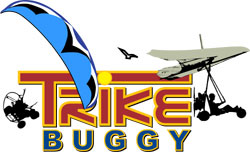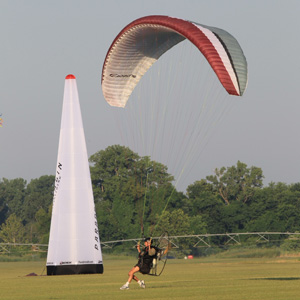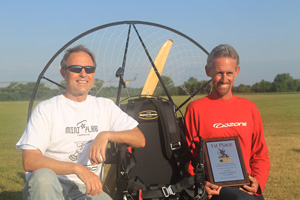Endless Footdrag 2012
Summer Air Games on the Arkansas/Oklahoma Border!
|
The event brought out a great group of pilots from around the country. Some were new to competition and others were more seasoned competitors. The Endless Footdrag Competition set the stage for many personal bests and prec ision flying. Sessions relied heavily on the great volunteers that gave their time and helped tremendously with the judging and recording of times and distances. Each session consisted of three flights. Scoring was based on a number of factors. Every flight, in the effort to emphasize the importance of primary flying skills, counted the take off and spot landing heavily. The first flight was the Footdrag where pilots drag their feet through three offset gates for the fastest time. The second flight challenged competitors to conquer the classic Cloverleaf around 30 foot pylons. The third flight was the bomb drop with a new twist - done with a whiffle ball! If you weren't careful, you could blow your own "bomb" right off the spot with your prop blast as you left the area! The practice session took place Saturday morning in relatively calm conditions. Unfortunately, once the practice session was over, the wind kicked in and we had to wait for the first session. By late Saturday afternoon, the air was smoothing out, and the competitors were ready to play. Two complete competition sessions were planned, with the best of either complete session counted for each pilot towards final score. The first and second flights incorporated a spot landing where you touch the spot, then fly or walk forward without letting the wing touch the ground until you kick a second cone to get the maximum score. On the final task, the motor had to be cut with enough altitude to complete a full 360 degree turn before completing a true spot landing, staying as close to the spot as possible. Saturday, on the first Competition session, Jeff Goin gave a fantastic performance, coming in first place over Ryan Shaw, then Paul Lundquist, Britton Shaw and Joe Vaughan. I had a really bad third flight with two blown launch attempts then going to my knees 20 feet from the spot. I had forgotten the fundamentals! I tried a different riser trim than I normally fly and it worked out very badly. This was a good reminder that you need to know your wing inside and out before competing and have a plan on how you are going to fly each task. That final flight of the first session left me in 6th place. Jeff left for Chicago Saturday evening, knowing he had done very well in the first session. What he didn't realize was that by being absent for session two on Sunday, the field of competitors was smaller, so this session's scores were easier to attain. Since I had backed myself into a corner the previous day with my final flight of the first session, I needed this second session to redeem myself. On Sunday, the second session turned out to be a very good for me! I did well enough to bring my scores up to First Place. The next day, Britton took me to Magazine Mountain, a hang glider launch where we got the sweetest glass-off flight (no motors). Britton flew his R11 and I flew my new LM4 until sunset in butter smooth conditions. OK is better than OK, and Arkansas ROCKS. Thanks again, Britton! Comp results: http://www.usppa.org/Competition/2012/2012_national_rankings.htm.
|
|
|---|
|
DISCLAIMER: Please read and be sure you thoroughly understand this disclaimer before flying a TrikeBuggy. Trike flying is an extremely demanding sport requiring exceptional levels of attention, judgment, maturity and self discipline. It is unlikely that you will be able to participate in it safely unless you make a conscious and continual commitment to your own safety. PPG and Hang Glider Trike flying is a dangerous sport and may result in injury and death even when practiced by a competent pilot using proper equipment. TrikeBuggies are not covered by product liability insurance, nor have they been designed, manufactured or tested to any federal or state government airworthiness standards or regulations. Do not fly them unless you are willing to assume personally all risks in the sport of Trike flying, and all responsibility for any property damage, injury, or death which may result from your use of this TrikeBuggy. Safe operation of the TrikeBuggy requires a pilot proficiency equivalent to that of a BFI (Basic Flight Instructor), as well as an equivalent level of knowledge and understanding of those wind and weather conditions which may compromise the pilot's safe control of the TrikeBuggy. In particular, be advised that gusty winds or turbulent conditions may interfere with even an expert pilot's ability to safely control the TrikeBuggy, and may cause it to crash. Never take anything for granted in Trike Flying. If you are in doubt about anything, stop and figure it out or contact TrikeBuggy. Also please read our Warning and Caution! |
All the information and images published in this website are property of TrikeBuggy.com unless stated otherwise.
Reproduction of any part of these contents (info, graphics & pictures) by other website or media is strictly forbidden,
unless specially authorized by TrikeBuggy.com
© TrikeBuggy 2006 – 2025
Please respect the rights and intellectual property of this Web site.


